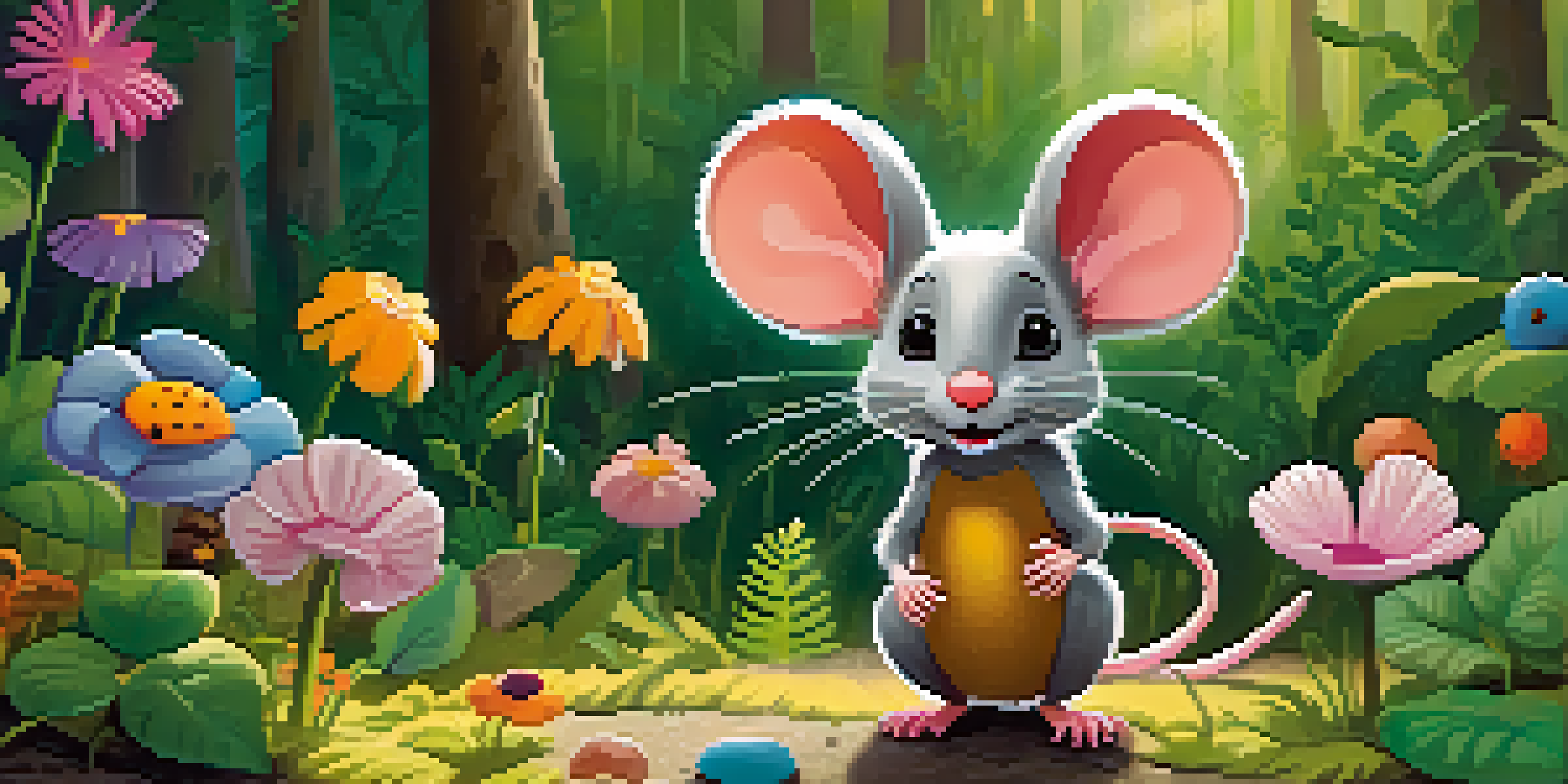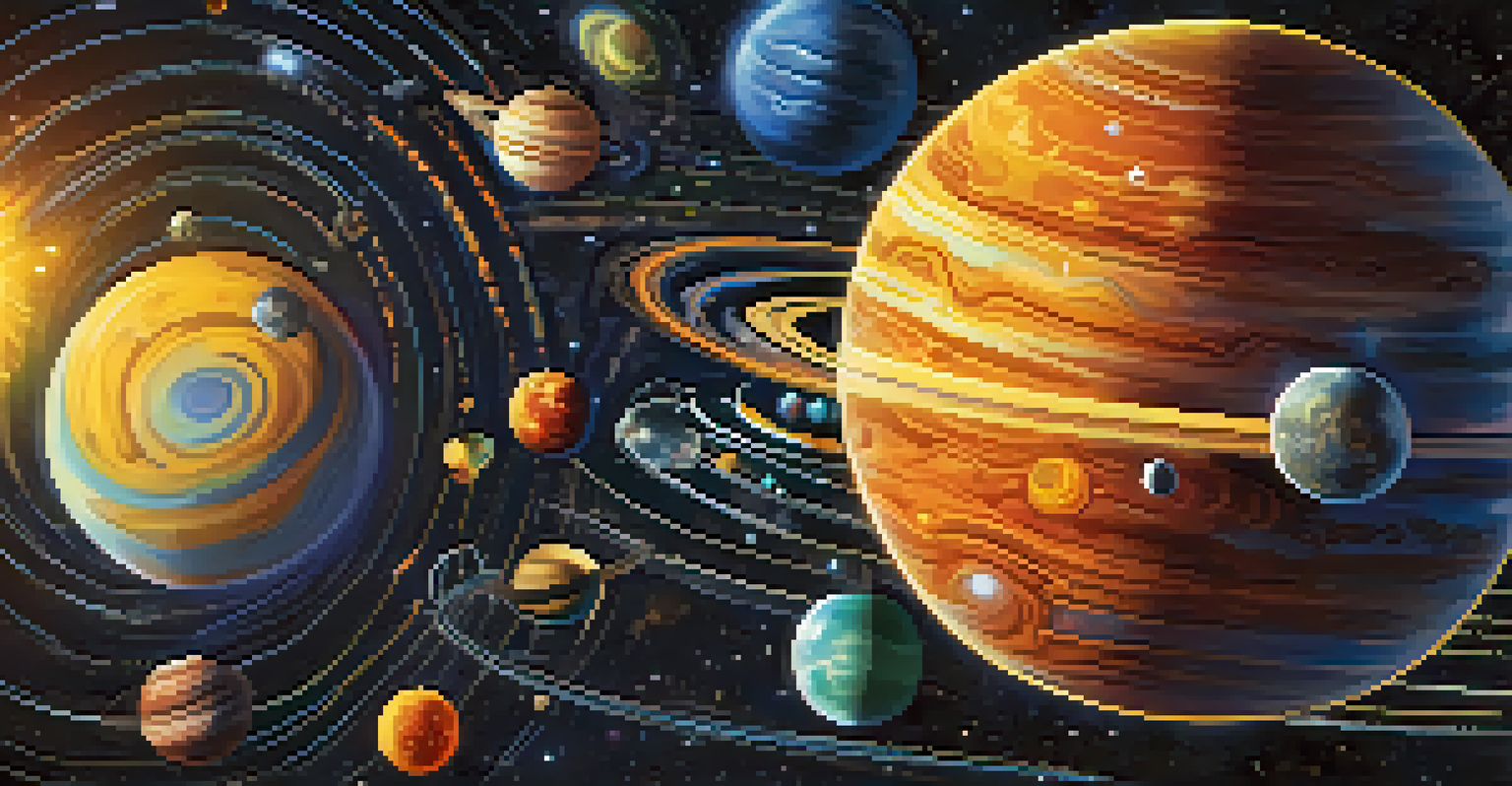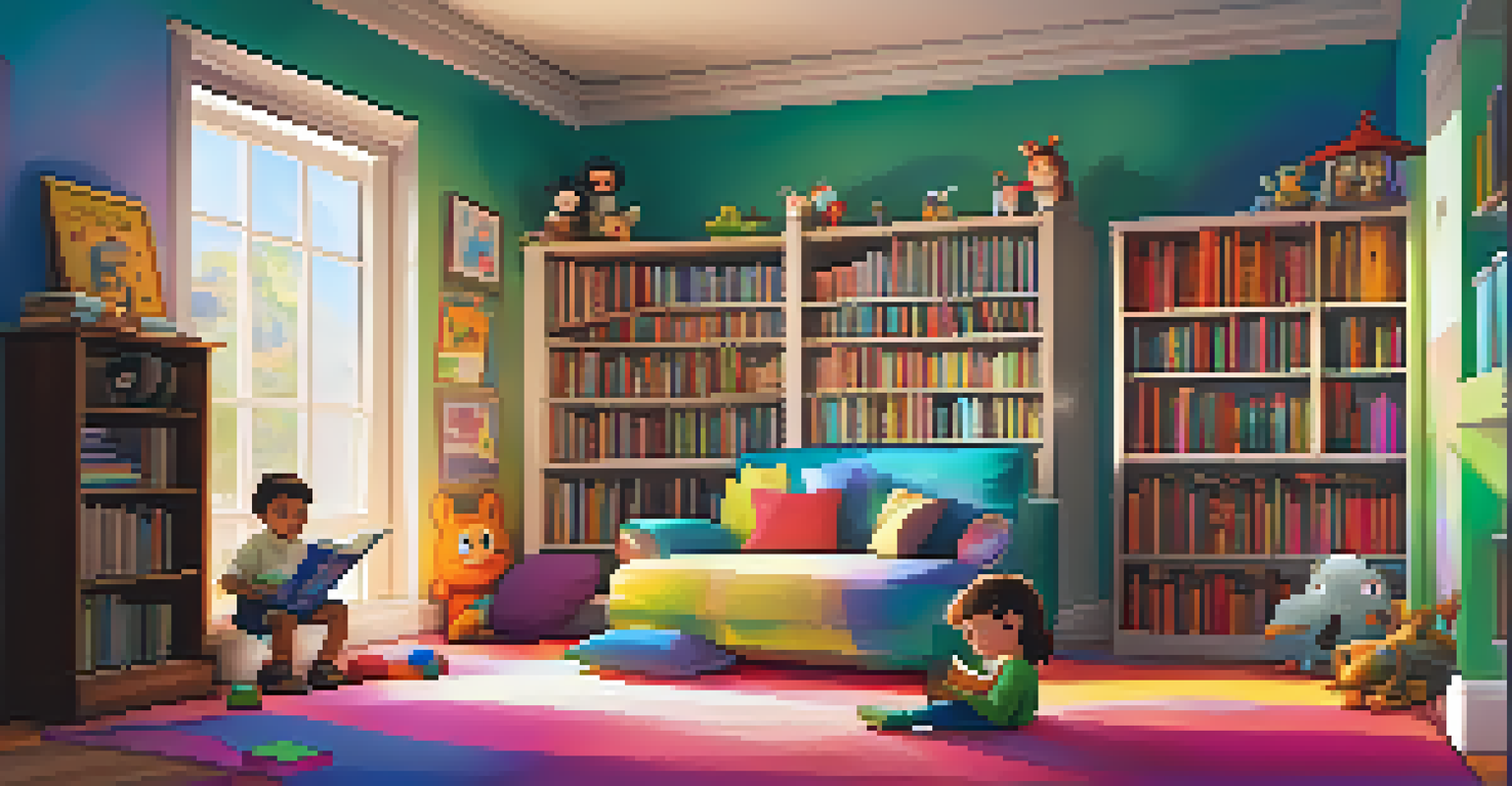The Role of Illustration in Children's Literature

Illustration: A Gateway to Imagination for Kids
Illustration serves as a vibrant window into the world of children's literature. For young readers, pictures ignite their imagination, transforming words into vivid scenes. Think of it like a movie trailer; just a glimpse can spark curiosity and excitement about the story ahead.
Illustration is the gateway to a child's imagination.
In many cases, illustrations can convey emotions and ideas that words alone might struggle to express. A joyful character's grin or a whimsical landscape can evoke feelings that resonate deeply with children. This visual storytelling can sometimes speak louder than text, making it easier for kids to connect with the narrative.
Moreover, illustrations encourage children to explore stories independently. They can look at pictures and form their own interpretations of what is happening, which fosters creativity. This engagement helps develop a love for reading that can last a lifetime.
The Relationship Between Text and Illustration
The interplay between text and illustration is crucial in children's books. Often, illustrations complement and enhance the written narrative, providing context or adding layers of meaning. For example, a story about a brave little mouse becomes even more compelling when readers can see the mouse's daring adventures visually.

This synergy helps to build comprehension, especially for younger readers who might struggle with complex language. When they can see what they’re reading, it strengthens their understanding and retention of the story's themes. It’s like giving them a roadmap that guides them through the narrative landscape.
Illustrations Ignite Imagination
Illustrations serve as a vibrant gateway, enhancing children's understanding and engagement with stories.
Additionally, the relationship between text and illustration can introduce children to new concepts and vocabulary in an engaging way. A picture can act as a mnemonic device, helping kids remember new words or ideas associated with the visuals.
Diverse Styles of Illustration in Children's Books
Children's literature showcases a myriad of illustration styles, each bringing a unique flavor to storytelling. From whimsical and colorful to detailed and realistic, the style can significantly influence a child's reading experience. Think of how the playful art of Eric Carle in 'The Very Hungry Caterpillar' attracts young readers with its bold colors and simple shapes.
A picture is worth a thousand words.
Different styles can cater to varying age groups and developmental stages. For instance, younger children might respond better to bright, cartoonish illustrations, while older kids may appreciate more sophisticated artwork. This adaptability allows illustrations to be tailored to the audience, enhancing engagement.
Moreover, diverse illustration styles can help children understand different cultures and perspectives. Books featuring various artistic interpretations can introduce kids to global stories, fostering empathy and broadening their worldview. It's a colorful celebration of diversity on every page.
Emotional Connection Through Illustrations
Illustrations play a pivotal role in establishing an emotional connection between young readers and the characters. Children often identify with illustrated characters, feeling their joys and sorrows as if they were their own. This emotional engagement is essential for developing empathy and understanding complex feelings.
For instance, a beautifully illustrated scene of a child overcoming fear can inspire courage in young readers. They might see themselves in that character, motivating them to face their own challenges. It’s this kind of connection that makes stories memorable and impactful.
Text and Illustration Synergy
The interplay between text and illustrations enriches narratives, making them more accessible and memorable for young readers.
Additionally, illustrations can help children process their emotions by providing visual representations of feelings they may find difficult to articulate. A sad character or a moment of joy depicted in vibrant colors can serve as a powerful tool for discussion and understanding.
Illustrations in Educational Children's Literature
Educational children's books leverage illustrations to enhance learning and retention. Pictures can simplify complex concepts, making them more accessible for young minds. For example, a book about the solar system with colorful planets can help kids remember their names and characteristics more easily.
Moreover, illustrations in educational literature often serve as visual cues that guide children through the learning process. They can highlight key points, making it easier for kids to grasp new information. This method not only makes learning fun but also reinforces understanding.
Additionally, the combination of text and visuals in educational books encourages active participation. Children can engage with the content by answering questions or completing activities that relate to the illustrations, fostering a more interactive learning experience.
The Impact of Digital Illustration in Modern Literature
With the rise of digital technology, illustrations in children's literature have evolved significantly. Digital illustrations offer new possibilities for creativity, allowing artists to experiment with styles and techniques that were previously difficult to achieve. This evolution can result in vibrant, interactive illustrations that captivate young readers even more.
Digital platforms also provide opportunities for animated storytelling, where illustrations come to life. This dynamic approach can engage children in ways traditional books may not, making reading a more immersive experience. Just think of the excitement a child feels when they see their favorite story animated on a screen.
Future of Diverse Illustrations
As children's literature evolves, diverse illustrations will play a crucial role in fostering empathy and inclusivity among readers.
However, while digital illustrations present exciting possibilities, it’s essential to balance screen time with traditional reading. Both formats have their place in a child's development, and integrating them can help nurture a well-rounded love for literature.
The Future of Illustration in Children's Literature
As we look to the future, the role of illustration in children's literature continues to evolve. New technologies, such as augmented reality, are beginning to shape how stories are told, offering even more interactive experiences. Imagine reading a book and seeing characters pop out of the pages right before your eyes!
Furthermore, as society becomes more diverse, illustrations are increasingly reflecting this change. Diverse representation in children's literature is essential for fostering inclusivity and helping all children see themselves in the stories they read. This trend is not just beneficial; it’s necessary for nurturing a generation that values empathy and understanding.

Ultimately, the future of illustration in children's literature is bright. As artists and authors collaborate to create engaging, relevant stories, the impact of illustrations will only grow, continuing to inspire and captivate young readers for years to come.